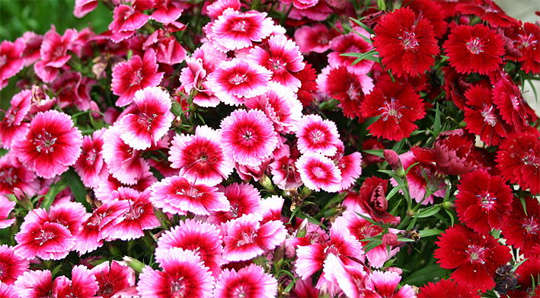Weekend Gardening: March Tips
March 18, 2017
Here are gardening tips for the month of March from the University of Florida IFAS Extension office:
Flowers
- Annual flowers that can be planted in March include: ageratum, alyssum, amaranthus, asters, baby’s breath, begonia, calendula, celosia, cosmos, dahlia, dusty miller, gaillardia, geranium, hollyhock, impatiens, marigold, nicotiana, ornamental pepper, pentas, phlox, rudbeckia, salvia, sweet Williams, torenia, verbena, vinca and zinnia.
- Caladium bulbs are extremely sensitive to cold soil. There is no advantage to planting early. Purchase caladiums while there is a good selection, but wait until late March or April before planting them in shady beds.
Trees and Shrubs
- Finish pruning summer flowering shrubs such as althea, hibiscus, abelia, oakleaf hydrangea and oleander.
- Delay the pruning of azaleas, camellias, spiraeas, gardenias and other spring flowering shrubs until after flowering is complete.
- Prune any cold weather-damaged plants after new growth appears.
- If needed, fertilize shrubs and small trees with a slow release fertilizer. A good general-purpose landscape fertilizer is a 15-0-15.
- Mature palms should receive an application of granular fertilizer. Use a special palm fertilizer that has an 8-2-12 +4Mg (magnesium) with micronutrients formulation. Apply one pound of fertilizer per 100 sqft of canopy area or landscape area.
- Last opportunity to spray shrubs with dormant horticultural oil.
- Pick up all fallen camellia blossoms and remove them from your property. This practice helps to prevent petal blight next season.
- Prune ornamental grasses.
- If you are in the market for specific colors of azaleas, visit the local nurseries and garden centers this month. Though this is not the most ideal planting time you are assured of the right flower color without having to wait until next blooming season.
Fruits and Nuts
- Time to finish planting bare-root fruit trees.
Vegetable Garden
- This is the month for establishing a spring vegetable garden. Early March plantings have about an even chance of avoiding a late frost.
- The warm season vegetables that can be planted this month are: bush beans, pole beans, lima beans, cantaloupes, sweet corn, cucumbers, eggplant, okra, southern peas, peppers, sweet potatoes, pumpkins, summer squash, winter squash, tomatoes and watermelon.
- The cool season vegetables that can be planted this month are: beets, carrots, celery, collards, endive, kohlrabi, leek, lettuce, mustard, bunching onions, parsley, English peas, Irish potatoes, radish and turnips.
- More conservative gardeners might wish to wait until the middle to latter part of the month to risk tender plants such as tomatoes and peppers.
Lawns
- Remove excessive accumulation of leaves from the lawn. This will increase the effectiveness of fertilizers and pesticides applied to the lawn.
- If a preemergence lawn herbicide is needed to control summer weeds, it should be applied in early March. Make certain to choose one that is safe on your kind of grass.
- Keep lawn herbicides away from the root zones of desirable flower, shrubs and other plants.
- Fertilize the lawn only after the danger of frost has passed and when the grass has greened up. Fertilize using a complete fertilizer applied at 0.5 lbs nitrogen per 1000 sqft containing 50% soluble and 50% slow-release nitrogen.
- Service the lawn mower: include a sharpening of the blade and adjusting of the cutting height for your type of grass.
- Anyone considering establishment of centipedegrass from seed should hold off until the soil warms up and stabilizes above 70°F. Add Item Here…




Comments